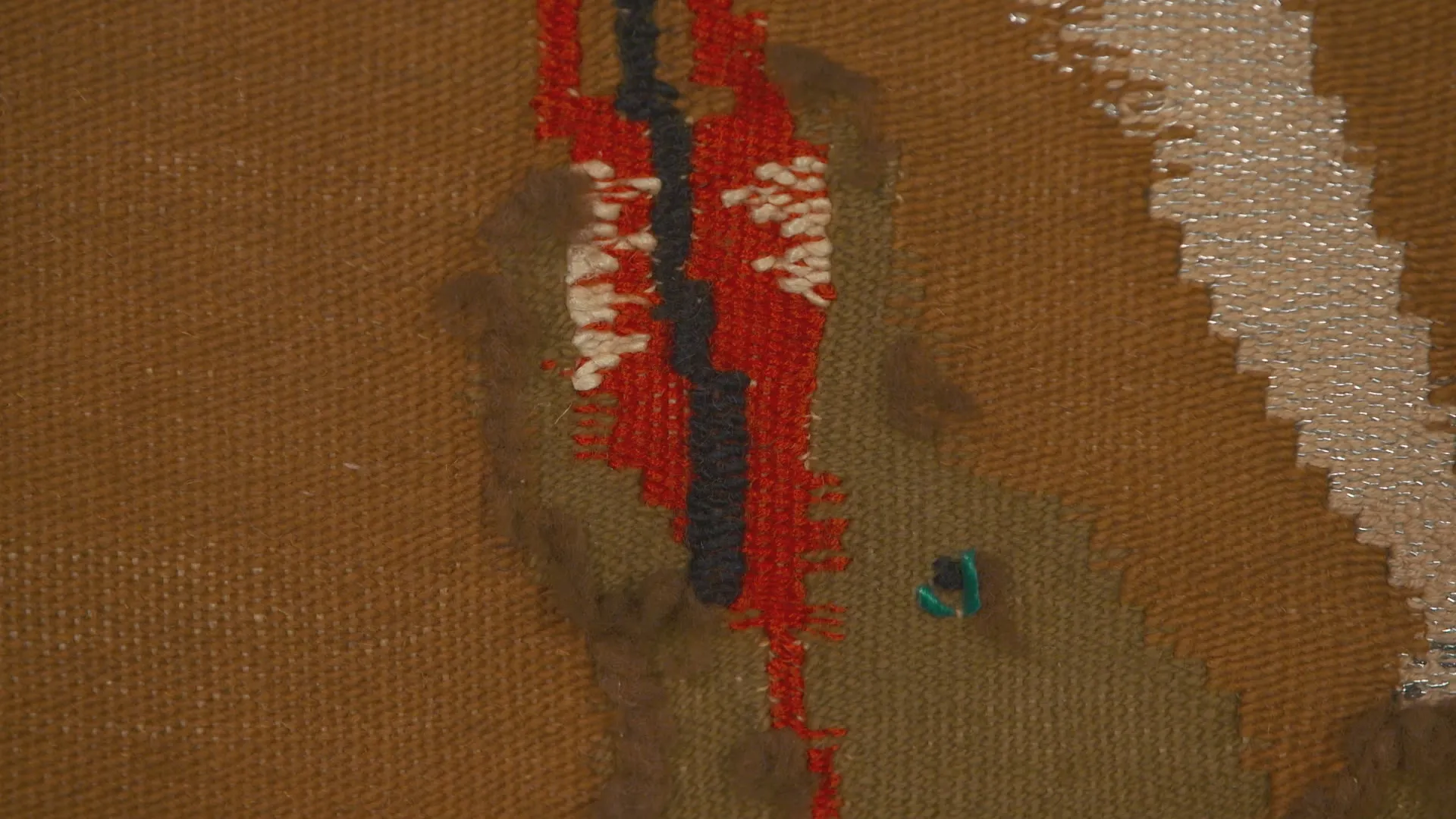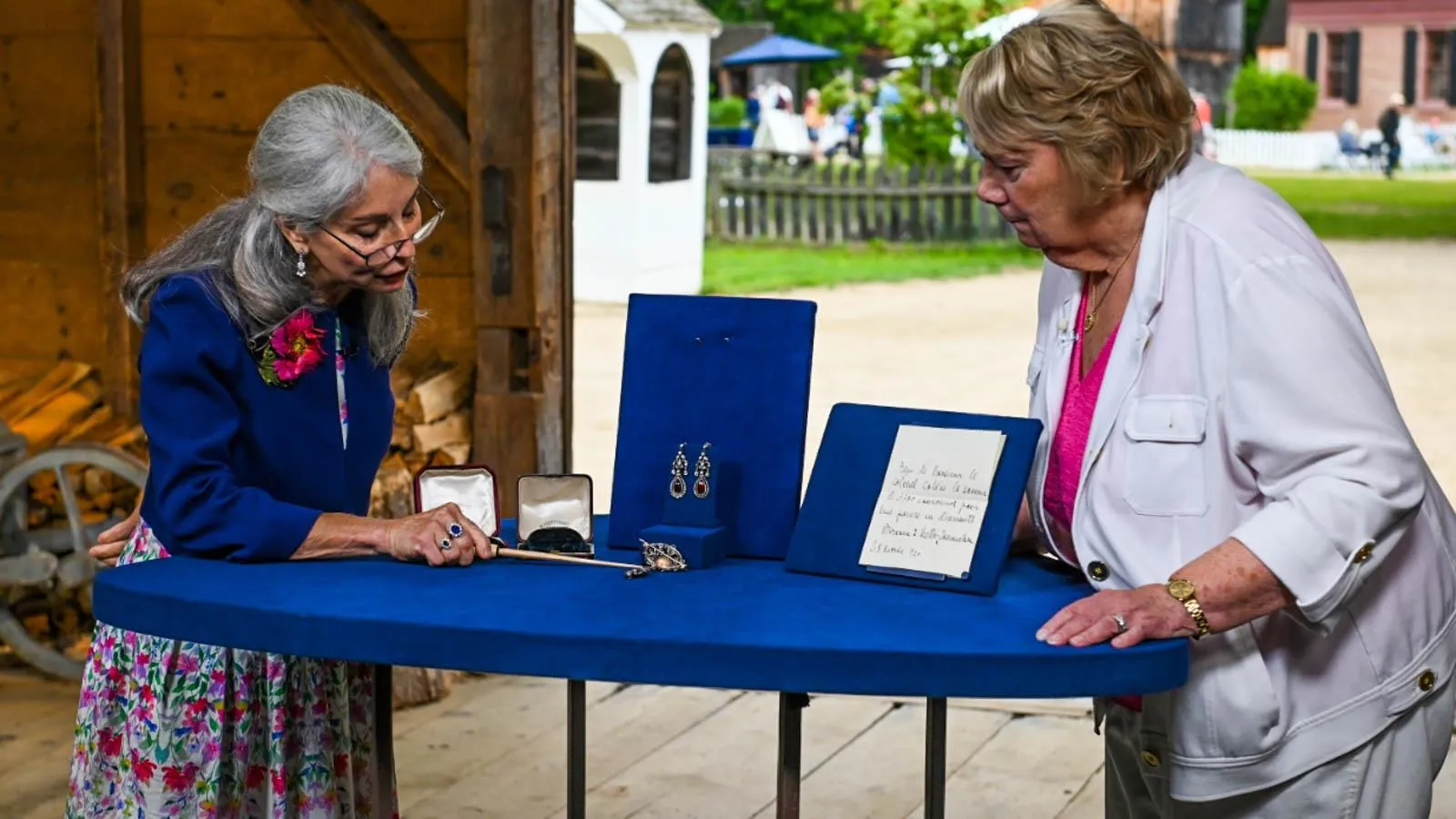GUEST: My grandmother was a weaver for the Dorothy Liebes studios. Besides doing that as her day job, she learned how to do tapestry weaving. This is one of the earlier ones she did. We call it "George and the Dragon," probably late 1940s, early, early 1950s. And then, as she became older, she was doing things that reminded her of home. She's Danish, and this one here is of Denmark, with the runestones and the heather.
APPRAISER: It is fantastic that you brought these two pieces in, tapestries woven by your grandmother, Kamma Zethraus, who was the star weaver in the studio of Dorothy Liebes. Dorothy Liebes basically is the godmother of weaving in this country in 20th-century America. So to see these is great-- they are fiber art. It's textile art. It's very different from what Kamma would have been doing in the workshop with Dorothy. The nine-to-five weaving was a commercial weaving. You had said this one you thought was late 1940s, early 1950s, and I, I would have probably guessed the same. And my reason for thinking about circa 1950 is because of this use of Lurex, which, Lurex was only invented in 1946. It is a metallic substance that is then sandwiched in plastic, effectively.
GUEST: Ah.
APPRAISER: It doesn't tarnish, and today, 70 years later, it still looks like silver. As modern as this fabric is, the scene is picking up on a totally different tradition. What we see here is St. George and the dragon in a very modern and very different context. So this piece closest to you, when do you think your grandmother wove it?
GUEST: So I think it was in the 1970s.
APPRAISER: It was more marketable, in a way, this Modernist, abstracted style. The different textures, the longer cut yarn versus the flat weave at the top, it's really something that is happening in the late '60s and then into the '70s. In terms of value, I would put these conservatively at auction in the range of about $1,000 to $1,500 each.
GUEST: Okay.












